Otto Edward Pirkola was born on March 13, 1908 in Yaphank, Long Island, New York, according to his World War II draft card. His parents, Edward (1883–1958) and Anna (1883–1976), were Finnish emigrants.
The 1910 United States Census said Pirkola, his parents and younger sister, Esther, resided on Colonial Avenue in Hempstead, New York. His father was a carpenter who emigrated in 1903. At Ancestry.com there is a passenger list with an “Edvard Pirkola” who sailed aboard the S.S. Celtic from Liverpool, England on April 15, 1903. Nine days later he arrived in New York City, where he would join his cousin, Ida Pirkola, who paid for his passage. She lived at 577 12th Avenue, New York City.
According to the 1915 New York State Census, the Pirkolas lived on Pennsylvania Avenue in Hempstead, New York. His father was a carpenter. Pirkola attended Roosevelt School.
Pirkola’s father signed his World War I draft card on September 12, 1918. At the time he lived in Roosevelt, New York, on Centennial Avenue. The address was the same in the 1920 census which included another son, Alfred, in the household.
Pirkola and his sister were students at Hempstead High School. They were listed in the The Colonial 1925 yearbook.
The 1925 New York state census listed the Pirkola family at 105 Lillian in Freeport, New York. Pirkola attended Freeport High School.
The Nassau Daily Review (Freeport, New York), April 15, 1927, Pirkola and his winning entry.
Pirkola Is Winner of Poster Contest at Freeport H. S.The poster by Otto Pirkola, of 105 Lillian avenue, Freeport, his been judged the best submitted in the poster contest open to pupils of the Freeport High School for art work best depicting the need of the $500,000 Freeport Community Hospital. Otto was warded first prize of $10 in gold by the committee in charge of the contest. …Otto is a popular member of the senior class of the high school. He is 19 years old and he has shown a marked aptitude for drawing during his school life. He is a member of the staff of “The Student,” the school paper, and many of his, contributions have appeared in this sheet. He is also a member of the Art Club of the school and the Glee Club. …
Nassau Daily Review, May 6, 1927, said Pirkola was the art editor of the student newspaper.
Dodd Praises Work of Freeport Pupils on Student PaperThe last issue of the Freeport High School publication, “The Student,” is out today and is a Memorial issue. It contains the pictures of three Freeport High School men of the five who lost their lives in the World War and a brief history of these men.Superintendent of Schools John W. Dodd addressed the student body of the Seniors Wednesday at noon in the assembly ball and lauded the work of the Student staff for editing the publication and the students for giving it their support. He said this year”s issues had been the finest that the school has ever enjoyed.
Pirkola graduated in June 1927.
In the 1930 census, Pirkola was an artist who did sign work. The 1930 Freeport city directory listed Pirkola as a card writer. The Pirkola family remained in Freeport at 79 Lillian Avenue.
Pirkola was a self-employed commercial artist in the 1940 census. He lived with his parents and brother at the same address.
On October 16, 1940, Pirkola signed his World War II draft card. His description was five feet eleven inches, 168 pounds, with blue eyes and brown hair.
Several movie trade publications, including The Film Daily, October 2, 1942, noted Pirkola’s upcoming service.
Three members of the RKO Radio home office joined the armed forces this week. Otto Pirkola, publicity department artist, enlisted in the Coast Guard. Because of his previous small boat experience he was given the rating of assistant boatswain, second class.
In The Comic Book Makers (2003), Joe Simon talked about working at Harvey Comics and how Pirkola got his job there.
Another good-sized room held the art department. Otto Pirkola was the actual art director, regardless of Leon’s [Leon Harvey] title. Otto and Harlan Crandall, the former art director at Macfadden Publications who had steered me into the comic book business, had spent time moonlighting as an advertising agency. The endeavor had faltered and the part-time partners decided to search out other means of employment. When Alfred Harvey told them he had an opening for an art director—but that he could hire only one of them—the two ex-advertising guys flipped a coin in Alfred’s office. Otto won and remained for over twenty years until he retired. Otto’s young assistant was Ken Selig, a graduate of the High School of Music and Art, and just discharged from the army. A bullpen of letterers and three production artists occupied the remaining drawing tables.
Pirkola continued living with his parents at the same address according to the 1950 census. He was an art director at a publisher.
Ken Selig was interviewed by Jim Amash in Alter Ego #89, October 2009, “Come Back When You Learn How To Draw”. Selig talked about Pirkola.
Otto Pirkola … was a master of logos. Otto was largely responsible for the logo look of Harvey Comics. Otto came aboard about 1949 from McFadden Publications. Otto was an unsung hero at Harvey, because I always considered the comic book as a poster. He gave the comic books a posterish look with his logos, and that’s the first thing you saw. You didn’t see the body of the cover when you looked at the usual newsstand or candy store where you bought your comics. You saw the logo first, so it had to stand out. Otto had a very friendly nature, meaning that when he saw me, he sort-of realized that I was a young fellow who was pretty much like himself. I had to be instructed by Otto in how to peel a piece of masking tape. He saw me fumbling with this double-backed masking tape, and I said to him, “I don’t think you really want me here. I don’t know how to handle this stuff,” because I’d not been in an art department before then.
… He had once worked for McFadden [sic] Publications. Florence Buckley [the office manager] asked Otto to come over from—I think it was Redbook. So he was hired about 1948 or ’9 …
Selig became Harvey’s art director when Pirkola retired around 1970.
In Amerikansuomalaisia Sarjakuvataiteilijoita [American Finnish Cartoon Artists] (2008), Ilpo Lagerstedt wrote
Nyt Oton elämässä alkoi erikoinen vaihe. Hän muutti Suomeen serkkunsa Aili Wikströmin kanssa. He asuivat joitakin vuosia Vantaan Myyrmäessä. Sieltä he muuttivat Helsinkiin. Erikoista, jopa katkeran huvittavaa on se, että Vantaan jälkeen Otta ja Aili asuivat meidän kodistamme noin kilometrin päässä Helsingin Huopalahdentiellä. Olen hyvinkin saattanut tavata Oton tietämättäni. Otto ja Aili muuttivat myöhemmin Palm Beachin rantakaupunkiin Floridaan, jossa heillä oli yhteinen koti. Siellä Otto kuoli 22.11.1992. Hänen uurnansa tuotiin Suomeen keväällä 1993 ja haudattiin Helsingin pitäjän kirkon hautausmaalle. Aili Wikström kuoli vuonna 2000 ja hänet on haudattu Oton viereen.Google TranslationNow a special phase began in Otto’s life. He moved to Finland with his cousin Aili Wikström. They lived in Myyrmäki, Vantaa, for some years. From there they moved to Helsinki. What is special, even bitterly amusing, is that after Vantaa, Otta and Aili lived about a kilometer from our home on Huopalahdentie in Helsinki. I may well have met Otto without my knowledge. Otto and Aili later moved to the beach town of Palm Beach, Florida, where they shared a home. Otto died there on November 22, 1992. His urn was brought to Finland in the spring of 1993 and buried in the cemetery of the parish church in Helsinki. Aili Wikström died in 2000 and is buried next to Otto.
SIDEBAR: Otto Pirkola’s Logos
The exact date of Pirkola’s employment at Harvey is not known. I believe Selig has the best estimate at around 1949. Identifying Pirkola’s logos is based on changes to some of the logos published in 1948 and 1949. I believe new logos from 1950 through 1969 are by Pirkola. As art director, Pirkola would have been involved with approving logos he did not design. Apparently Harvey did not publish any new titles in 1970. Selig said Pirkola retired around 1970. One new 1971 title was Richie Rich Fortunes. It is possible this title was Pirkola’s last logo. Below are covers, in mostly alphabetical order, from the Grand Comics Database.
3-D Dolly #1, 1953
Adventures in 3-D #1, November 1953
The Adventures of Billy and Betty #1951, 1955
Army & Navy Fun Parade #50, August 1951
AstroComics, 1968
The title was typeset to match the American Airlines
logo. Pirkola’s role was limited to art directing.
Babe Ruth Sports Comics #1, April 1949
The first Baby Huey logo in
Paramount Animated Comics #7, February 1954
Second Baby Huey logo in
Paramount Animated Comics #9, June 1954
Third Baby Huey logo in
Paramount Animated Comics #15, May 1955
Baby Huey #22, July 1956; fourth logo
with a slightly different “the Baby Giant”
Baby Huey, the Baby Giant #1, September 1956
The fourth logo version was used on the series.
Baby Huey and Papa #1, May 1962
Baby Huey in Duckland #1, November 1962
A Better Life for You!, c1960
Black Cat Mystery Comics #30, August 1951
(Black Cat logo is not by Pirkola)
Black Cat Mystery #44, June 1953
Blondie Comics Monthly #16, March 1950
(Blondie series logo is not by Pirkola)
Blondie #142, December 1960
Blondie & Dagwood Family #1, October 1963
Bobby Shelby Comics #1, 1949
Bunny #1, December 1966
Buzzy the Crow, Harvey Hits #18, March 1959
Casper in Harvey Comics Hits #61, 1952
Casper the Friendly Ghost #15, December 1953
Casper’s Ghostland #1, Winter 1958–1959
Casper and Nightmare, Harvey Hits #37, October 1960
Casper & Nightmare #6, November 1964
Casper and Spooky, Harvey Hits #20, May 1959
Chamber of Chills Magazine #21, June 1951
Chamber of Clues #27, February 1955
Chic Young’s Dagwood Comics #1, September 1950
Chic Young’s Dagwood Comics #5, April 1951
Chic Young’s Dagwood Comics #49, January 1955
Daisy and Her Pups Comics #21, June-July 1951
Daisy and Her Pups Comics #17, March 1954
Devil Kids Starring Hot Stuff #1, July 1962
Diamond Deputies, 1961
Dick Tracy #25, March 1950
Dotty Dripple Comics #3, December 1948
Family Funnies #1, September 1950
(Funnies was reused on Tiny Tot Funnies #9, farther down)
Famous TV Funday Funnies #1, September 1961
Felix the Cat’s Nephews, Inky and Dinky #1, September 1957
Fighting Fronts #1, August 1952
First Love Illustrated #1, February 1949
First Romance Magazine #1, August 1949
Flash Gordon #1, October 1950
Flash Gordon #4, April 1951
Flat-Top #4, March 1955
Flip #1, April 1954
The Friendly Ghost, Casper #1, August 1958
Fruitman Special #1, December 1969
Funday Funnies, 1961
Funny 3-D #1, December 1953
G.I. Juniors, Harvey Hits #86, November 1964
Gabby Gob, Harvey Hits #85, October 1964
Green Hornet, Racket Buster #44, March 1949
(Racket Buster was reused on Kerry Drake
Racket Buster Cases #32, farther down;
Green Hornet logo is not by Pirkola)
Green Hornet, Racket Buster #45, May 1949
Harvey 3-D Hits #1, January 1954
Harvey Comics Hits, 1951–1953. This series
is a great showcase of Pirkola’s logo designs.
Harvey Comics Hits #51, October 1951, Phantom
Harvey Comics Hits #52, November 1951,
Steve Canyon’s Air Power
Harvey Comics Hits #53, December 1951, Mandrake
Harvey Comics Hits #54, 1952, Jungle Terror
Harvey Comics Hits #55, March 1952, Love Stories
Harvey Comics Hits #57, May 1952, Kidnap Racket
Harvey Comics Hits #58, June 1952, Girls in White
Harvey Comics Hits #59, August 1952,
Tales of the Invisible
Harvey Comics Hits #60, September 1952,
Paramount Animated Comics
Harvey Comics Library #1, April 1952,
Teen-Age Dope Slaves
Harvey Comics Library #2, 1952, Blackmail Terror
Harvey Hits, 1957–1967. Series introduced
several new characters and titles. They have
been inserted alphabetically in the list.
Harvey Pop Comics #1, October 1968
Harvey Pop Comics #2, November 1968
Harvey-Toon, Harvey Hits #29, February 1960
Harvey-Toons, Harvey Hits #53, February 1962
Herman and Katnip, Harvey Hits #14, October 1958
Herman and Katnip, Harvey Hits #25, October 1959
Hi-School Romance #1, October 1949
Hi-School Romance Datebook #1, November 1962
Horace & Dotty Dripple #25, August 1952
Horace & Dotty Dripple #32, October 1953
Horace & Dotty Dripple #37, October 1954
Hot Stuff, the Little Devil #1, October 1957
Hot Stuff, the Little Devil #2, 1957
A charred texture was added to the letters.
Hot Stuff Sizzlers #1, July 1960
Humphrey Comics #1, October 1948
Humphrey Comics #18, August 1951
Invisible Scarlet O’Neil #1, December 1950
Jiggs & Maggie #22, April 1953
Joe Palooka’s Battle Adventures #68, May 1952
Joe Palooka Comics #76, March 1953
Joe Palooka #94, April 1956
Junior Funnies #11, October 1951
Katzenjammer Kids #22, April 1953
Katzenjammer Kids #27, February-March 1954
Kerry Drake Detective Cases #13, March 1949
Kerry Drake Detective Cases #18, February 1950
Kerry Drake Racket Buster Cases #32, June 1952
(Li'l Abner Comics logo is not by Pirkola)
Little Audrey #25, August 1952
Little Audrey #29, April 1953
Little Audrey #46, February 1956
Playful Little Audrey #1, June 1957
Little Audrey Clubhouse #1, September 1961
Little Audrey and Melvin #1, May 1962
Little Audrey TV Funtime #1, September 1962
Little Dot #1, September 1953
Little Dot #10, March 1955
Little Dot’s Uncles, Harvey Hits #4, December 1957
Little Dot’s Uncles and Aunts #1, October 1961
Little Dot Dotland #1, July 1962
Little Lotta #1, November 1955
Little Lotta’s Lunch-Box, Harvey Hits #10, June 1958
Little Lotta Foodland #1, September 1963
Little Lotta Foodland #2, December 1963
Little Max Comics #1, October 1949
Little Max Comics #10, April 1951
Little Max Comics #16, April 1952
Little Max Comics #35, June 1955
Love Lessons #1, October 1949
Love Lessons #3, December 1949
Man in Black #1, September 1957
Mazie #23, September 1957
Military Courtesy, 1950
(somewhat similar to Simon and Kirby’s Boys’ Ranch)
Mutt & Jeff #116, February 1960
Mutt & Jeff Jokes #1, August 1960
Mutt & Jeff New Jokes #1, October 1963
New Frontiers, 1958
Nightmare & Casper #1, August 1963
Penrod’s Boys' Almanac Illustrated, Fall 1952
Phantom, Harvey Hits #1, September 1957
Rags Rabbit #11, June 1951
Rags Rabbit #15, September 1953
Rags Rabbit, Harvey Hits #2, October 1957
Richie Rich, Harvey Hits #3, November 1957
Richie Rich’s Golden Deeds, Harvey Hits #9, May 1958
Richie Rich #1, November 1960
Richie Rich Millions #1, September 1961
Richie Rich Dollars and Cents #1, August 1963
Richie Rich Success Stories #1, November 1964
Ripley’s Believe It or Not Magazine #1, September 1953
Ripley’s Believe It or Not Magazine #4, March 1954
Romance Stories of True Love #45, May 1957
Sad Sack Comics #v1 #1, September 1949
Sad Sack Goes Home, May 1951
Sad Sack’s Funny Friends #1, December 1955
Sad Sack and the Sarge #1, September 1957
Sad Sack’s Army Life, Harvey Hits #8, April 1958
Sad Sack Laugh Special #1, Winter 1958–1959
Sad Sack Laugh Special #2, Spring 1959
Sad Sack’s Funny Friends #27, May 1960
Sad Sack’s Funny Friends #46, July 1963, Hi-Fi Tweeter
Sad Sack Army Life Parade #1, October 1963
Little Sad Sack, Harvey Hits #73, October 1963
Sad Sack’s Muttsy, Harvey Hits #74, November 1963
Sad Sad Sack #1, October 1964
Little Sad Sack #1, October 1964
Spooky #1, November 1955
Spooky Spooktown #1, September 1961
(Steve Canyon logo is from the comic strip.)
Stevie, Harvey Hits #5, January 1958
Stumbo the Giant, Harvey Hits #49, October 1961
Stumbo Tinytown #1, August 1963
Sweet Love #1, September 1949
Tastee-Freez Comics, 1957
(used established character logos)
Teen-Age Brides #1, August 1953
Teen-Age Brides #5, April 1954
Terry and the Pirates Comics #15, April 1949
Terry and the Pirates #17, August 1949
Thrills of Tomorrow #17, October 1954
Time of Decision, 1950
Tiny Tot Funnies #9, June 1951
Tomb of Terror #1, June 1952
Top Notch Funnies, 1959
True 3-D #1, December 1953
True Bride-to-Be Romances #17, April 1956
True Brides’ Experiences #8, October 1954
True Love Problems and Advice Illustrated #3, October 1949
Love Problems and Advice Illustrated #31, January 1955
(True is dropped from the title.)
Love Problems and Advice Illustrated #38, March 1956
(True is dropped from the title.)
True War Experiences #1, August 1952
Tuff Ghosts Starring Spooky #1, July 1962
TV Casper & Company #1, August 1963
War Battles #1, February 1952
Warfront #1, September 1951
Weather Bird Comics, September 1957
Wendy, Harvey Hits #7, March 1958
Wendy, the Good Little Witch #1, August 1960
Wendy Witch World #1, October 1961
Witches Tales #1, January 1951
Your Vote Is Vital! 1952
SIDEBAR: Titles edited by Joe Simon
Joe Simon edited several titles for Harvey Comics. He’s also known for designing logos and having a letterer do the final art. Harvey Comics was the publisher and had final say on what it produced.
Boys’ Ranch #1, October 1950
Captain 3-D #1, December 1953
Witches Western Tales #29, February 1955
Witches Western Tales #30, April 1955
Western Tales #31, October 1955
Alarming Tales #1, September 1957
Race for the Moon #1, March 1958
Alarming Adventures #1, October 1962
Alarming Adventures #2, December 1962
Blast-Off #1, October 1965
Thrill-O-Rama #1, October 1965
Unearthly Spectaculars #1, October 1965
Warfront #36, October 1965
Jigsaw #1, September 1966
Spyman #1, September 1966
Thrill-O-Rama #2, September 1966
Fighting American #1, October 1966
Double-Dare Adventures #1, December 1966
Unearthly Spectaculars #2, December 1966
Warfront #38, December 1966
SIDEBAR: Harlan Crandall
Harlan Crandall was involved with two people who went into comics: Joe Simon and Otto Pirkola. Crandall was fifteen months older than Pirkola. They grew up together and probably knew each other at a young age. In the 1925 Hempstead High School yearbook, The Colonial, Pirkola, his sister and Crandall’s twin brothers, Russell and Wilbur, were freshman. Census records show Crandall’s and Pirkola’s various residences.
1910: Both lived in Hempstead, Long Island, New York.
1920: Both lived in Roosevelt, Long Island, New York.
1930: Both lived in Freeport, Long Island, New York.
In Joe Simon: My Life in Comics (2011), Simon recalled how he got into comics.
One day in 1939 I was in Harlan Crandall’s office at Macfadden, and he was looking at some work I had brought in. He was impressed with how fast I could deliver what he needed. I had learned speed on the newspapers, where there were always urgent deadlines. …… “There’s a new business that’s starting to use a lot of artists. … I have a friend who runs an agency. … His name is Lloyd Jacquet, and based on your samples, I think you’d be perfect for the business. I’m going to send you over to see him.”I thanked him, and asked what this “new business” was.“It’s called comic books.”
I think Harlan Crandall was very interested in comics from the start, because he was a wannabe cartoonist himself. Also, he was a great letterer.
In the 1940 census, Crandall was married with three children and lived in Hempstead. Pirkola was single and living with his parents in Freeport.
On October 16, 1940, World War II draft cards said Pirkola was self-employed and Crandall was an art director at Macfadden Publications.
On January 24, 1944, the Nassau Daily Review-Star (Freeport, New York) said Crandall was at Macfadden Publications.
Nassau Daily Review-Star, March 18, 1944
Crandall is on the left.
In the mid- to late-1940s, Simon said, in The Comic Book Makers, Pirkola and Crandall “had spent time moonlighting as an advertising agency”. Later, both applied for the art director position at Harvey. Simon explained how Pirkola got the job.
… When Alfred Harvey told them he had an opening for an art director—but that he could hire only one of them—the two ex-advertising guys flipped a coin in Alfred’s office. Otto won and remained for over twenty years until he retired.
The 1950 census said Pirkola and his parents resided in Freeport. Crandall and his family lived in Mountain Lakes, New Jersey.
At some point Crandall established a studio called Harlan Crandall Associates. Crandall was listed in the Annual of Advertising and Editorial Art and Design for the years 1951, 1952 and 1953. According to the May 1953 issue of Art Director & Studio News, Crandall had died. The New Jersey Death Index, at Ancestry.com, said Crandall passed away March 1953 in Morristown, New Jersey.
Further Reading
Otto Pirkola—Harvey Comics Logo Designer
Mark Arnold
BearManor Media, 2017
Includes photographs of Otto Pirkola and Ken Selig
Michael Eury
TwoMorrows Publishing, 2017
Related Posts
A. Machine and Royal Cartoon, Mario Acquaviva, Gerald Altman, Gene Barnett, Vivian Berg, Daniel Bhang, John Bulthuis, Ray Burley, Ray Burzon,
Gerda Gattel, Selma Meyers Gleit, Louis L. Goldklang, Angelo Grasso, Anita Greene, Al Grenet, Ed Hamilton, Ray Holloway, IBM Directory, Alex Jay, Albert and Charlotte Jetter,
Abe Kanegson, George Kapitan, Anna Kaufman, Gary Keller, Rick Keller, Nadine French King, Ralph Komisarow, Grace Kremer, Morrie Kuramoto, Al Kurzrok,
Bob Lander, Bob Laughlin, Bob Leatherbarrow, Shelly Leferman, Len Leone, Joe Letterese, Veda Lufkin,
Robert N. MacLeod/Leroy Lettering, Lee Maroshek, Larry Mayer, Ed McLean, Jack Meltzer, Jim Novak, Bill Oakley, Ben Oda,
Walter Palais, Stephen Palmisano, Otto Pirkola, Fred Proctor, Jerry Robinson, Joe and Sam Rosen, George Roussos,
Georgette Sauterel, Ira Schnapp, Irving Settel, Rome Siemon, Artie Simek, Lora Sprang aka Pat Gordon, Herman Stackel, Stan Starkman, Daisy Swayze, Zoltan and Terry Szenics,
(Next post on Monday: The Masterworks Series of Great Comic Book Artists)
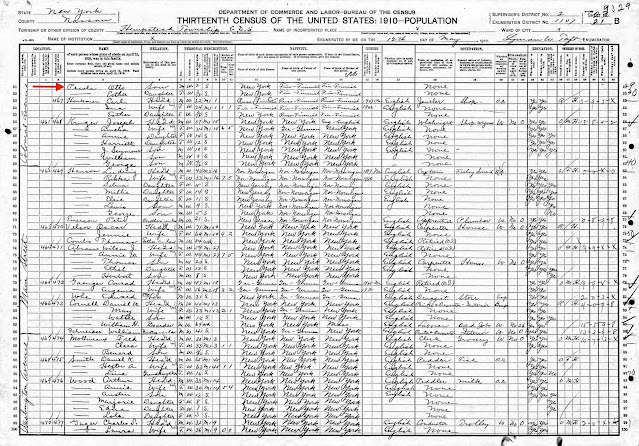






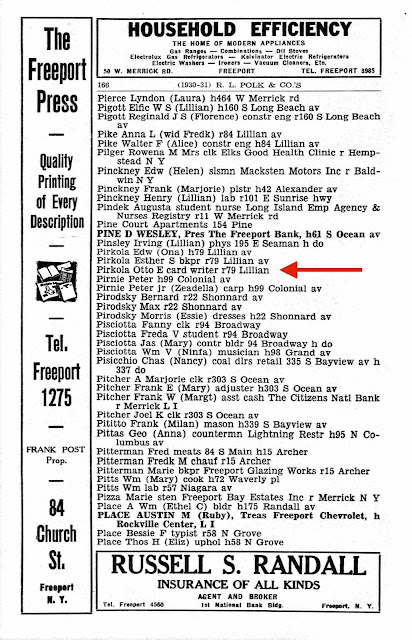



















































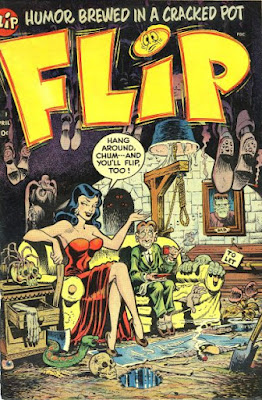

















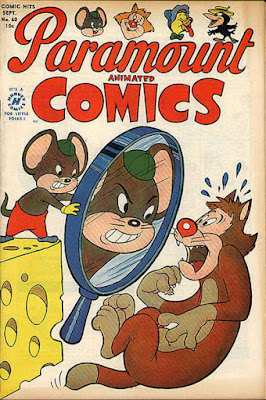


















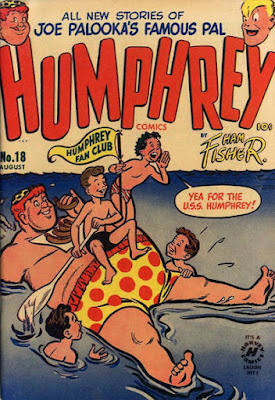














































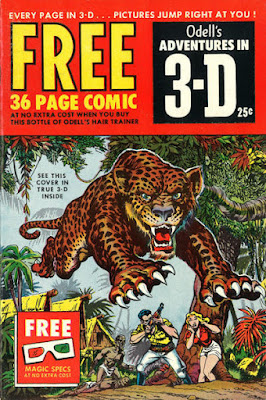




















































































.jpg)
No comments:
Post a Comment